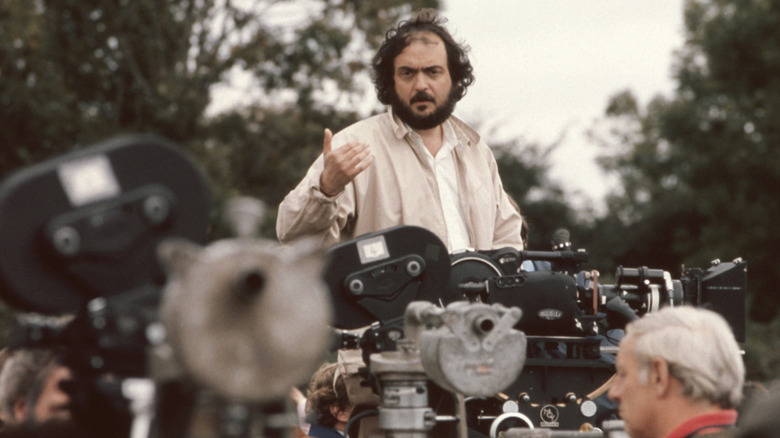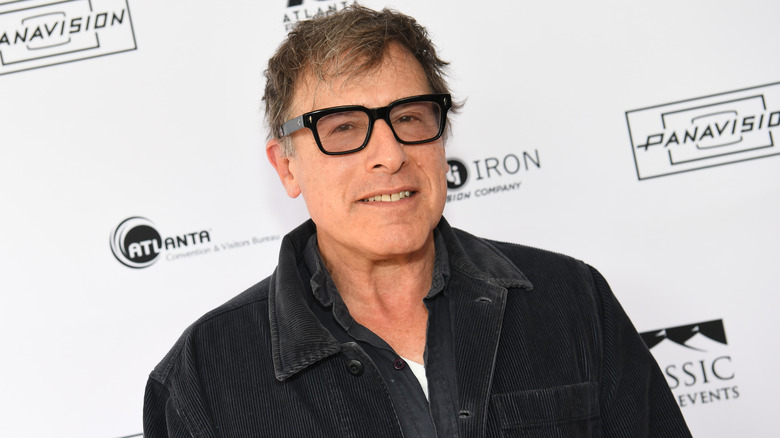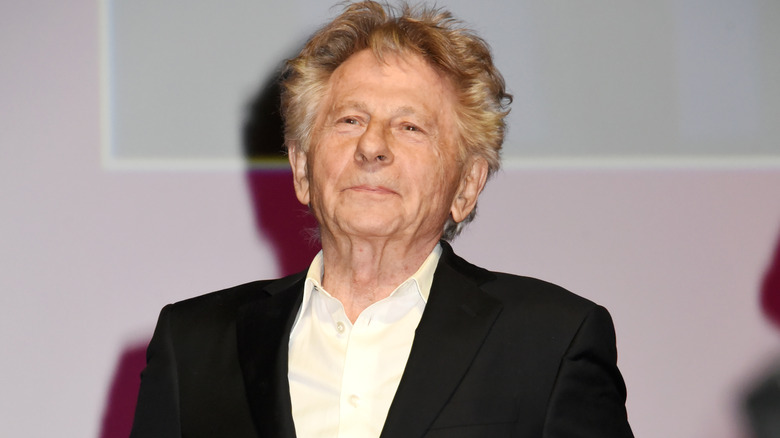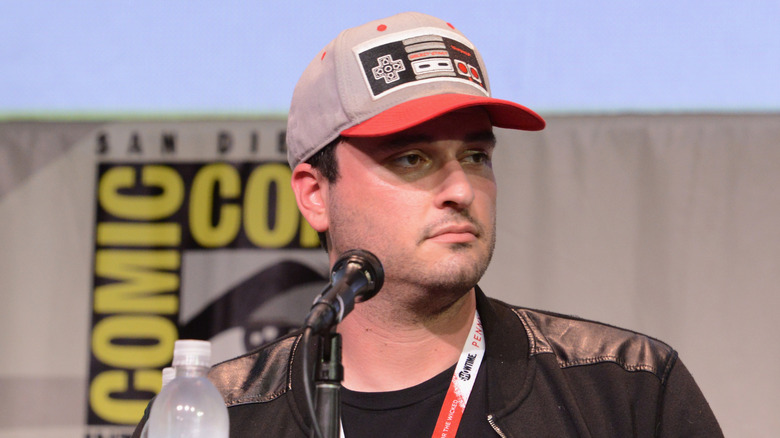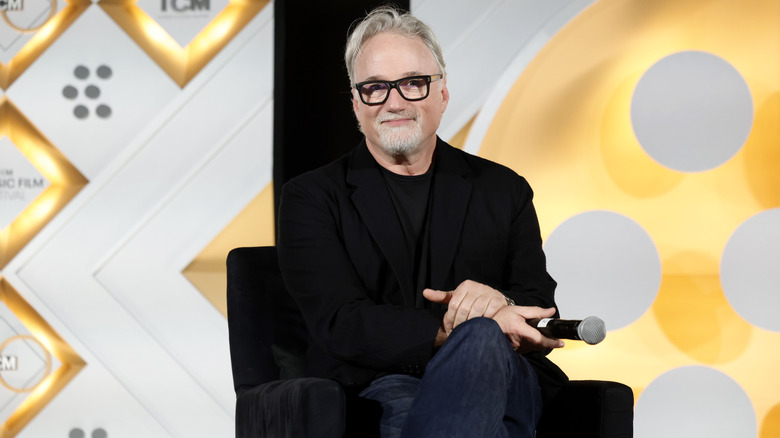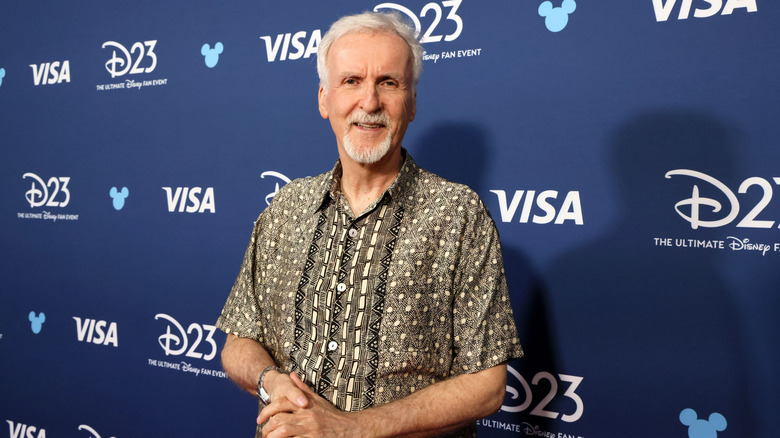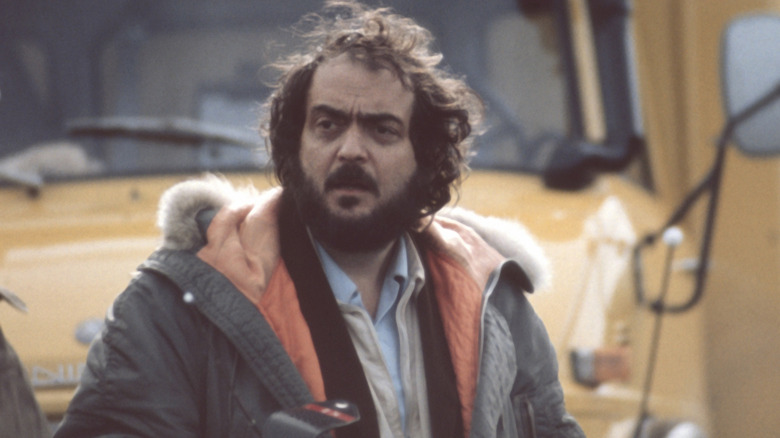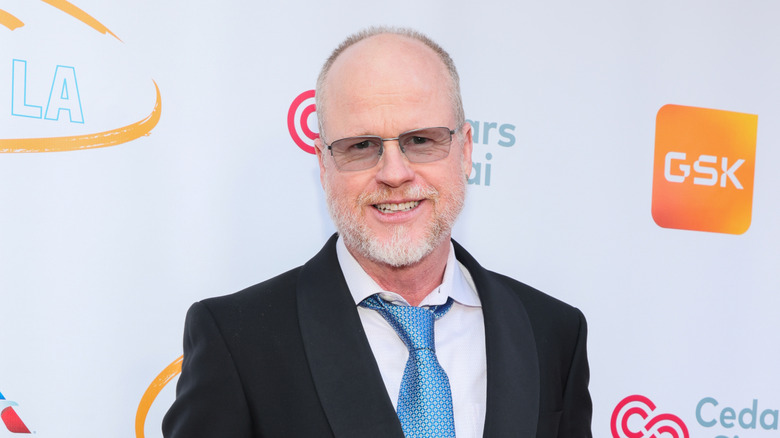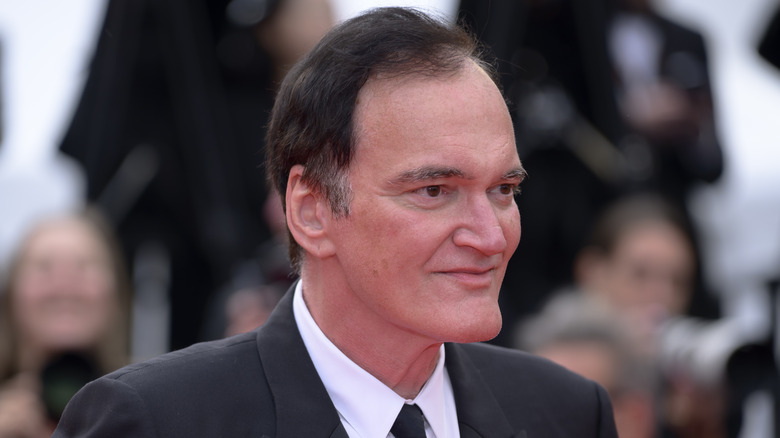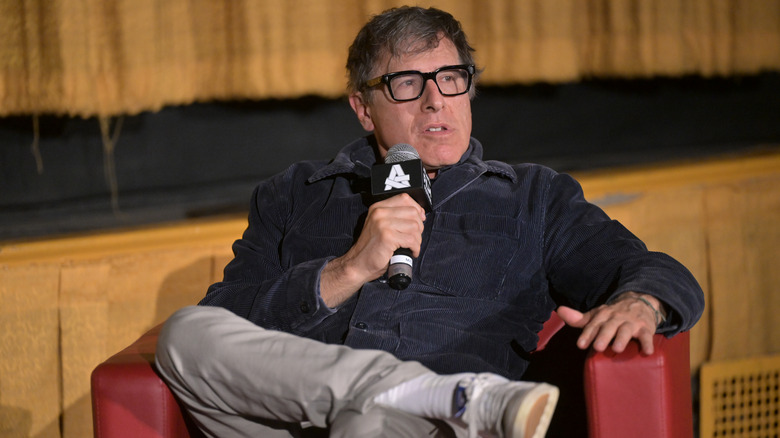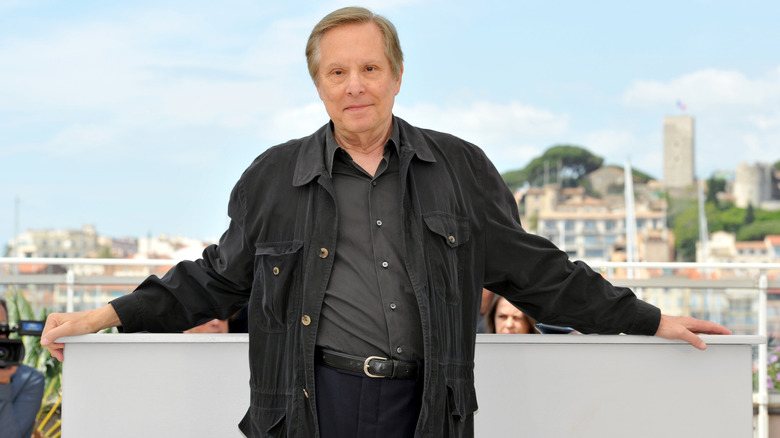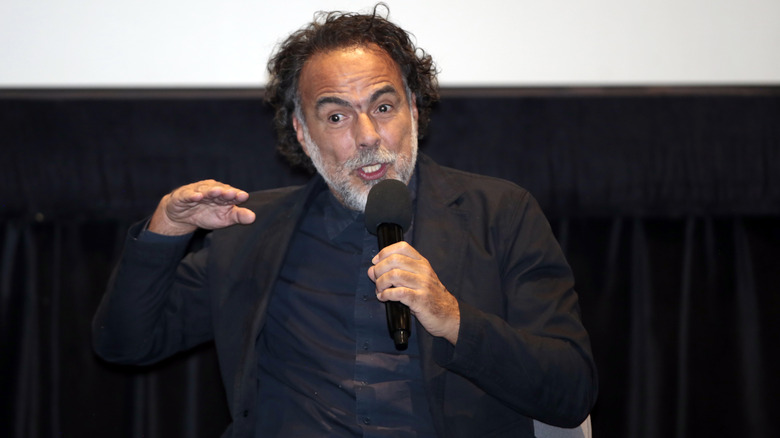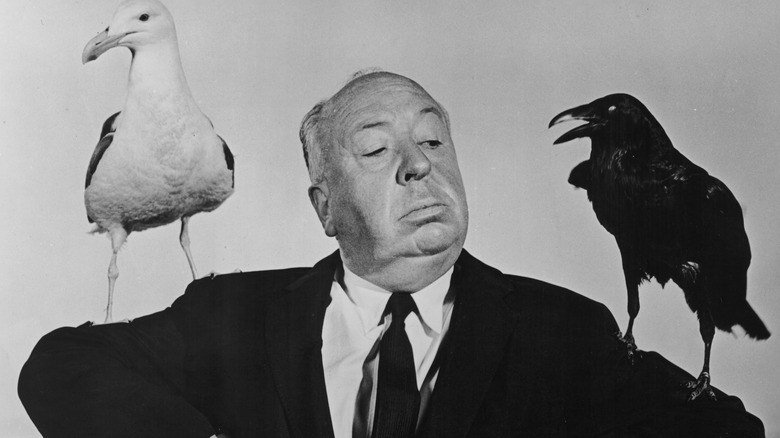Times Hollywood Directors Went Too Far On Set
We may receive a commission on purchases made from links.
Part of a director's job is capturing the best performances from the actors to tell the best possible story. Sometimes, this involves the filmmaker pushing performers out of their comfort zones or encouraging them to try something drastically different from their usual shtick. Yet sometimes Hollywood directors go way too far on set, crossing lines that should never be crossed.
Stories about David O. Russell's alleged behavior on set have become notorious around Tinseltown, with the director having had run-ins with everyone from Amy Adams to George Clooney. Stanley Kubrick was another filmmaker who demanded perfection from his cast and crew, even if it was at the cost of Shelley Duvall, whom he infamously pushed too hard in "The Shining." Then there are others who may not have the hot temper nor perfectionist tendencies of their peers but have also pushed the boundaries of what would be deemed acceptable workplace conduct in any other industry. Let's take a look at the reported instances when Hollywood directors went too far on set. Brace yourself, because some of these examples are nothing short of brutal and may prove hard to read.
David O. Russell made Amy Adams cry on the set of American Hustle
David O. Russell is an award-winning director who has been behind the camera for a number of modern classics, including "American Hustle," "The Fighter," and "Silver Linings Playbook." He possesses a Midas touch, as whatever he tackles often turns into gold — or golden trophies, so to speak. However, Russell has developed a reputation of being overly aggressive toward actors.
Amy Adams collaborated with Russell on 2010's "The Fighter," but in 2016, she told British GQ that his behavior was different on the set of 2013's "American Hustle." In fact, he made her cry. "He was hard on me, that's for sure," Adams said. "It was a lot. I was really just devastated on set."
According to the Sony email leak — one of the biggest and most famous hacks in history — Russell was so extreme that Adams' co-star Christian Bale had to speak up and rein in the director. Even though "American Hustle" turned out to be a major hit — both critically and financially — the end doesn't justify the means for Adams. "It's not okay with me," she said. "Life to me is more important than movies." Adams added that she wouldn't write off ever working with Russell again, but it wouldn't be happening in the immediate future.
Roman Polanski yanked out Faye Dunaway's hair while shooting Chinatown
"Chinatown" remains one of the most important movies in the film noir genre, boasting all-time performances from Jack Nicholson and Faye Dunaway. The 1974 film was directed by Roman Polanski, who has had a controversial life, to say the least (the law currently protects him from being extradited from Europe to face sex crime charges in the U.S.). While Polanski's personal life has overshadowed his professional achievements, he was once regarded as one of the best directors in the world. So, pairing him with Dunaway and Nicholson appeared to be a dream team in the making.
Despite their respective talents, Polanski and Dunaway didn't see eye-to-eye during the production of "Chinatown." In the documentary "Faye," the actress admitted Polanski is a fantastic director but also called him "Roman the terror." She also credited Nicholson for helping to ease the tension during the filming of "Chinatown."
There was one incident that stuck with Dunaway, though. In the middle of shooting a scene, a piece of her hair fell on her face. Despite trying to move it repeatedly, the hair continued to misbehave. Polanski reportedly rushed in and pulled the hair right out of Dunaway's head. Resultantly, Dunaway cursed out the director and wore a hat for the remainder of the shoot. "It's offensive," Dunaway said. "You don't do that. So I went to my trailer. It was a whole situation."
Josh Trank and Miles Teller almost came to blows over Fantastic Four
After dazzling the audience with 2012's found-footage superhero film "Chronicle," everybody eagerly awaited to see what director Josh Trank would do with 2015's "Fantastic Four." Yet, the day before the movie's release, Trank posted and then deleted a cryptic message about the project on X (via Entertainment Weekly). "A year ago I had a fantastic version of this," he wrote. "And it would've received great reviews. You'll probably never see it. That's reality, though."
"Fantastic Four" received a critical beatdown of biblical proportions. For years, stories circulated about what made this movie such an unmitigated disaster. In 2017, Entertainment Weekly (via ComicBook.com) published a report detailing allegations of what had taken place on set. Supposedly, Trank hadn't wanted Kate Mara in the movie and made it known. The same couldn't be said about Miles Teller, whom Trank heavily advocated to play Reed Richards.
Despite the director's seal of approval, the pair almost came to blows on set. According to the report, Teller proved to be uncooperative and sarcastic at one point. The tension flared up as the director and actor faced off, but luckily, things never got physical.
David Fincher made his actors hit each other in Fight Club
Director David Fincher values the details. As a matter of fact, he's rubbed a few actors, such as Jake Gyllenhaal, the wrong way because of how demanding he can be to get the perfect shot. When it came to 1999's "Fight Club," though, he wanted a little more realism when the narrator (Edward Norton) throws his first punch at Tyler Durden (Brad Pitt). So much so that he encouraged Norton to aim a real punch in Pitt's direction.
"Fincher came up to me and said, 'Hit him. You know, connect with him somewhere,'" Norton explained on "The Tonight Show Starring Jimmy Fallon." "I didn't know what to do. And I hit him in the ear, and he says in the film, he goes, 'Ow! Why the ear?'" While it wasn't the type of punch to knock someone out, anyone who has been punched in the face — or ear for that matter — will tell you that it hurts. Why didn't Fincher just film the scene from another angle, where it only appears as if Norton connects with the punch, and add a sound effect later on? Only he knows.
The Abyss' cast weren't fans of what James Cameron put them through
James Cameron is one of the famous directors who escaped death. While shooting 1989's "The Abyss," he nearly drowned after his oxygen tank ran dry and the filmmaker was deep down at the bottom of a 7.5 million gallon concrete bowl. It wasn't the only scary incident on set, though — the cast of "The Abyss" also had several close shaves. Unsurprisingly, a few of the actors don't have fond memories of the experience. As Ed Harris told Entertainment Weekly, he also nearly drowned.
Mary Elizabeth Mastrantonio was so angry at what she perceived as inhumane treatment of the cast that she eventually blew up at the film crew. "We were guinea pigs, in a way, Jim wasn't quite sure how this was all gonna go down," Harris said. "[In the drowning scene I was] screaming at [Mastrantonio] to come back and wake up, and I was slapping her across the face, and I see that they've run out of film in the camera — there's a light on the camera — and nobody had said anything. And Mary Elizabeth stood up and said, 'We are not animals!' and walked off the set. They were going to let me just keep slapping her around!"
Stanley Kubrick made his actors do a scene 127 times in The Shining
What was Stanley Kubrick's on-set behavior really like? If you worked on 1980's "The Shining," "frustrating" is probably a term that would come to mind. Kubrick was so meticulous that he caused the production to go over schedule. In fact, actor Shelley Duvall had to stick around in England, where the film was shot, for more than a year.
That wasn't all, though: Kubrick forced Duvall and Jack Nicholson to do the baseball bat confrontation scene a whopping 127 times. For Duvall, the role — and Kubrick's intense demands — proved to be emotionally taxing. "Going through day after day of excruciating work," she told Roger Ebert. "Almost unbearable. Jack Nicholson's character had to be crazy and angry all the time. And in my character I had to cry 12 hours a day, all day long, the last nine months straight, five or six days a week." In a behind-the-scenes documentary shot by Kubrick's daughter, Vivian, the director scolds an obviously exhausted Duvall for her performance. Duvall, though, stated that Kubrick did this to get a rise out of her as a performer.
Joss Whedon threatened Gal Gadot's career on the Justice League set
The story of 2017's "Justice League" deserves its own book. After director Zack Snyder stepped away because of a family tragedy, Joss Whedon entered the fray to finish up the production. Following the film's release, actor Ray Fisher spoke out about Whedon. A subsequent investigative piece by The Hollywood Reporter alleged that Whedon had also clashed with other members of the cast, including Gal Gadot.
According to the report, Gadot questioned the consistency of her character in Whedon's new "Wonder Woman" scenes. He reportedly responded by telling her that he could damage her career and insulted "Wonder Woman" director Patty Jenkins. Sources say that Gadot and Jenkins raised the issue directly with the studio, Warner Bros.
Gadot confirmed Whedon's threats in an interview with N12 (via Entertainment Weekly). "He kind of threatened my career and said if I did something, he would make my career miserable, and I just took care of it instead," Gadot said. Though Whedon admitted there were disagreements between the pair, he denied Gadot's allegations to Vulture. "English is not her first language, and I tend to be annoyingly flowery in my speech," he said.
Uma Thurman accused Quentin Tarantino of trying to kill her in Kill Bill
Uma Thurman first worked with Quentin Tarantino in 1994's "Pulp Fiction," and they collaborated once again on both volumes of "Kill Bill" (the series is a trilogy that will sadly never get finished). "Kill Bill: Vol. 1" features a lot of action, which required Thurman to do a lot of her own stunts, but there was a specific one that left a mark on her. It happened in the scene in which Thurman's character, Beatrix Kiddo, drives a convertible on the way to find Bill (David Carradine).
Thurman revealed to The New York Times that she was apprehensive about doing the sequence because she had heard the car had been reconfigured, so she requested for a stuntperson to drive it instead. According to Thurman, Tarantino told her the car was fine and asked her to do it. She ended up crashing the car into a tree, which she claimed left her with a "permanently damaged neck," as well as "screwed-up knees." "Quentin and I had an enormous fight, and I accused him of trying to kill me," Thurman said. "And he was very angry at that, I guess understandably, because he didn't feel he had tried to kill me." She said the pair fought about it for years, as she wanted the footage of her crash but said the director refused to hand it over.
Tarantino later told Deadline that it was production that had refused to release the footage, and after 15 years, he finally helped her find it. As for Thurman, she said she doesn't blame the director, instead pointing to Harvey Weinstein and producers Lawrence Bender and E. Bennett Walsh, claiming they engaged in a "cover-up" to sweep the incident under the rug.
David O. Russell grabbed George Clooney's throat on the Three Kings set
David O. Russell makes his second appearance here. Another actor the director clashed with was George Clooney on the set of 1999's "Three Kings," and Clooney hasn't been shy about speaking about the experience. In 2000, during an interview with Playboy (via George Clooney's Open House), he opened up about the experience of working with Russell. The actor praised Russell's script and called him "a genius," but not when it came to handling people. Clooney alleged multiple incidents in which Russell mistreated his crew, and Clooney confronted him about it, attempting to diffuse the situation. It all came to a head one day when Clooney put his arm around Russell after a heated incident involving the director and assistant director. According to Clooney, Russell turned and challenged him to fight him, pressing his head against Clooney's.
"Then he got me through the throat, and I went nuts," Clooney said. "Waldo, my buddy, one of the boys, grabbed me by the waist to get me to let go of him. I had him by the throat. I was going to kill him. Kill him. Finally, he apologized, but I walked away." When Clooney was asked if he would work with Russell again, he said, "Life's too short."
Ellen Burstyn was left permanently injured after the Exorcist
William Friedkin's "The Exorcist" stands out as one of the scariest horror movies of all time. For Ellen Burstyn, who plays Chris MacNeil, the film remains memorable for another reason: It left her with a permanent back injury. Speaking to HuffPost Live, Burstyn discussed the scene in which the possessed Regan (Linda Blair) pushes her mother, Chris, to the floor.
According to Burstyn, the first time she filmed the scene, she hit the floor hard and hurt her back. When Friedkin called for them to do another take, she told him that the person pulling the wire to make her fall yanked it too hard. "And Billy said, 'Well, it has to look real,'" Burstyn recalled. "And I said, 'I know it has to look real, but I'm telling you, I could get hurt.' And so he said, 'Okay, don't pull her so hard.' But then I'm not sure that he didn't cancel that behind my back because the guy smashed me into the floor." She claimed that the numerous takes for this scene hurt her back permanently, and she has had to live with the pain since then. "Billy is one of those directors that is so dedicated to getting the shot right that I think some other considerations sort of fall by the wayside sometimes," Burstyn said of Friedkin's approach to directing.
Alejandro González Iñárritu pushed the cast to the limit on The Revenant
Alejandro González Iñárritu's "The Revenant" is a critically acclaimed, Oscar-winning movie. The story puts its protagonist, Hugh Glass (Leonardo DiCaprio), through the emotional and physical meat grinder (even though it's a Western period movie that got history totally wrong). Yet it wasn't only movie magic used to make Glass suffer on screen, as DiCaprio went to hell and back in real life too.
Iñárritu is a noted perfectionist, and he allegedly lost his temper on "The Revenant" set when things didn't go his way. He also had to reel in his expectations after producers warned him that it was becoming too dangerous for the actors. Speaking to Men's Journal, DiCaprio discussed a time in which he also had to tell Iñárritu that maybe it was time to take five. "We were supposed to do a scene with my son as he's praying for me," DiCaprio said. "And it hit 40 below zero. At that point we couldn't really open our eyes. And our fingers locked together, and the camera gear locked together, and I just looked at Alejandro and said, 'I'm all for enduring realism, but there comes a point when nothing is operable.'"
Alfred Hitchcock tied real birds to Tippi Hedren in The Birds
Alfred Hitchcock's "The Birds" is the film that turned Tippi Hedren into a star, but the actor doesn't have fond memories of the experience. In her memoir "Tippi," Hedren discussed what she went through to make the 1963 horror movie. She claimed that Hitchcock told her that he would use mechanical birds for the big scene in which her character, Melanie Daniels, gets attacked by birds. When the day arrived, though, Hedren found out they would be using real birds instead. According to Hedren, she had birds flung at her for five days, but the final day proved to be the most grueling — the animals were tied to her and started to peck her as more of them were thrown into the mix.
"I was too focused on my own survival to notice, but I was told later that it was even more horrifying and heartbreaking for the crew to watch than the previous four days had been," Hedren wrote. "And there wasn't a thing anyone but Hitchcock could do to put a stop to it." After a bird attacked close to her eye, Hedren put a halt to the scene.
